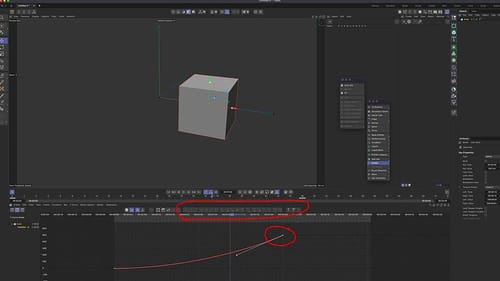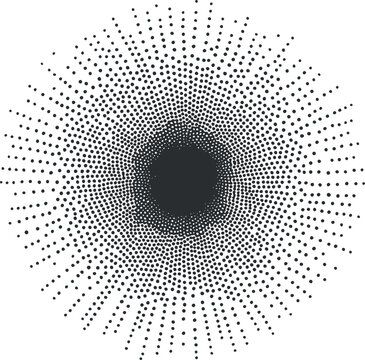I'll keep you posted, once they respond and have a chance to look into the issue.
Thanks, again, for your time.
Posts made by entry-newspaper
-
RE: 2026 Timeline Bugposted in Question & Answers
-
RE: 2026 Timeline Bugposted in Question & Answers
Interesting, thanks so much for continuing to investigate. It seems that there a number of ways to "wake up" those controls, but obviously, something is wrong; it's never behaved like that prior to 2026.
I'll open a ticket with Maxon, to let them do their thing. -
RE: 2026 Timeline Bugposted in Question & Answers
Being that it's the same issue, on two totally different machines, I figure it's more of a bug. But can I send you my custom layout file? Would that help to see if I did something weird, when I was laying out my preferred layout?
Independent of that, do I need to open a ticket with Maxon Support? -
RE: 2026 Timeline Bugposted in Question & Answers
Okay:
- Doesn't change anything.
- Also doesn't change, regardless of the project.
- This does work. More, below:
So, if I create a new keyframe (regardless of the property) it greys out those tools. But the moment I move the keyframe bezier handle, it immediately brings those tools to life. Or, like you suggested, by clicking on the "undock a copy" of the timeline.
But clearly, something is wrong. This exact same thing happens on both my M1 Ultra and M4 Max.
Is it possible that I did something weird when I customized my pallets? But even then, I set each machine up, independent of the other. In other words, I didn't copy and reuse the custom layout prefs. -
RE: 2026 Timeline Bugposted in Question & Answers
Ah, 500-pixels, thanks. And thanks for trying this on your end.
Here's my screen grab:

Just to make sure I'm describing this correctly, I can manipulate the keyframe / handle, it's all those other features (outlined in red) which don't become active, as they should. So, if I quickly highlight a keyframe, and want to zero the handle angle, I'm unable to do so.
-
RE: 2026 Timeline Bugposted in Question & Answers

I'm trying to load a 64k 960x540 jpeg. Something is wrong here...
-
2026 Timeline Bugposted in Question & Answers
Hi Dr. Sassi,
I'm wondering whether you can check on your M-Series Mac to see whether you can replicate an issue I've found with C4D 2026.
Specifically, in my timeline in F-Curve mode, when I select a keyframe handle, I'm NOT able to access any of the timeline tools. Quite the issue, to say the least.I've included a screen cap, where you can see how all of my icons are greyed-out, despite having the keyframe selected.
For what it's worth, I've included the basic project.This is happening on BOTH by M1 Ultra, and M4 Max MBP - each running C4D 2026 and OS 15.7.
Thank you!
P.S. Something seems to be wrong with the image host here. I keep trying to post a jpeg screen cap (only 1920x1080) and I keep being told that the "dimensions are too big".
-
RE: Double-click on 2026 project opens C4D2025posted in Question & Answers
Thanks, Dr. Sassi. I'll likely do just that. But doesn't it seem odd, that it would open an older version? I've never before seen that. No idea if that's some glitch in Cinema, or more likely the Mac OS?
-
Double-click on 2026 project opens C4D2025posted in Question & Answers
I just installed C4D 2026. It's on a machine with 2025 and 2023.
Oddly, when I double-clicked on a test project which had just been saved from 2026 (with C4D 2026 already being open, no less!) 2025 opened that file, instead.Any idea why that would occur? This is on my M1 Ultra, running 15.7 Sequoia.
-
RE: Quick Mograph Questionposted in Question & Answers
Thank you, Dr. Sassi.
I'll study these two projects, so I can incorporate the best method into the final project.
Have a pleasant weekend. -
Quick Mograph Questionposted in Question & Answers
Morning,
Please see attached project and (very general) example[radial mograph issue reference.
I'm creating a radial design with Mograph, and want to add randomness to the "tics".
But I'm not sure how to go about this, because if I add the "random" effector to the primary Cloner Object, it affects each subsequently cloned line identically. But if I apply the random to the secondary cloner object, the whole thing goes nuts.I'm sure I'm just missing a simple setting or procedure, but it must be too early for my brain to handle this, yet.
Thanks!

-
RE: UVW Tag Transfer Function Slowposted in Question & Answers
Hey, so sorry, Dr. Sassi. My original post is nearly worthlessly vague. I'll see whether I can find a minute to create a simpler proxy scene, so you can see precisely what I'm trying to accomplish.
But quickly, it's an animated effect, whereby I'm sort of turning the CAD part into a liquid-type shape, ultimately resolving in the shape of the original CAD piece. So the UV transfer has to deal with a frame-by-frame evolution of the volume / mesh builder.
More to come... -
UVW Tag Transfer Function Slowposted in Question & Answers
I'm working on a possible effect, where I'm building on a CAD part, via the volume builder and mesher.
All fine!
However, the original CAD part is already carefully UVW mapped. I've found that the "Transfer" function works really well, transferring those original UV coordinates to the meshed object.
However...it's exceptionally slow / laggy. So much so, that I'm not sure I'd want to risk trying to render something like this.I can't exaclty post the actual project, being that it has client CAD at its core.
But in general, is it expected that transferring UV's from a simple shape, to a more complex meshed shape, will slow down?
(I kind of figure it should...)Thanks!
-
RE: Project Outline of Complex Object?posted in Question & Answers
Thanks, Dr. Sassi.
Too bad, there isn't a ready solution, but at least it's not because I'm missing something.
I was hoping for a parametric solution, but have figured that I can export plan views out of one of my CAD apps, into illustrator. Then, from there, into C4D and go about my business.Cheers!
-
Project Outline of Complex Object?posted in Question & Answers
I'm struggling to figure out which tool, if any, can project the outline of a 3D shape, onto another surface?
I understand the "Project Object" tool can do something similar, but in all my tests, it (essentially) just moves every single point / polygon / edge to the other surface. But I ONLY want the spline outline, of that resultant shape.Any ideas?
Thank you!
-
RE: Transfer UVW from one object to another???posted in Question & Answers
Exactly. Thanks, Dr. Sassi.
Such a great tool, which I have never used or thought of using, until now.
Enjoy your time off, and have a great 4th of July. -
RE: Transfer UVW from one object to another???posted in Question & Answers
Never mind! Found the video; it was Chris Schmidt's (always excellent) roundup of new features from C4D 2024.4.
The tool is the "Property Transfer Manager" and it's buried in the "Character" tab. I never thought to look there.
In any event, it seems to do exactly what I need. -
Transfer UVW from one object to another???posted in Question & Answers
I'm positive I had watched a Maxon video, from one of your contributor experts, and they detailed how you can transfer a UV map from one object, to another similar one. But I can't find it now.
I need to do precisely this. I have the same object; one version is very-high poly, the other very low.
I unwrapped the UV's on the low one, because the results are very good. But I need to use that on the high-poly model, for final texturing.How does one do this?
Thanks!
-
RE: Generate Spline from Boole?posted in Question & Answers
Yeah, absolutely. I see the inherent complexity in something like that. I'll be able to really test your solution on an actual work project this coming week. So I can report back, depending on what I wind up doing.
Have a great weekend!
-
RE: Generate Spline from Boole?posted in Question & Answers
Wow, cool. Thanks, Dr. Sassi. I'm studying the key aspects of what you built, so I can understand more of what the operations are. Initially, it does look like the operation is generating individual polygon edges > splines and that's what you used to drive the eventual sweep.
So it's not necessarily one single spline, but many. So I might not be able (for instance) navigate an object / light around those pieces with something like the align to spline function. But overall, this still seems like a very solid option for other effects.Cheers!